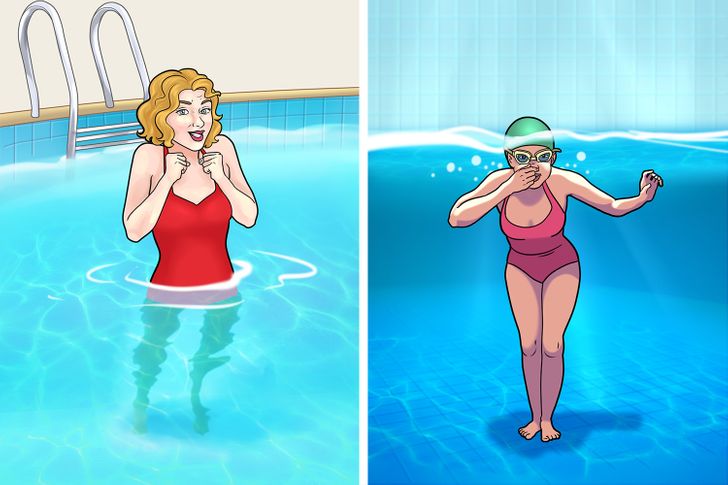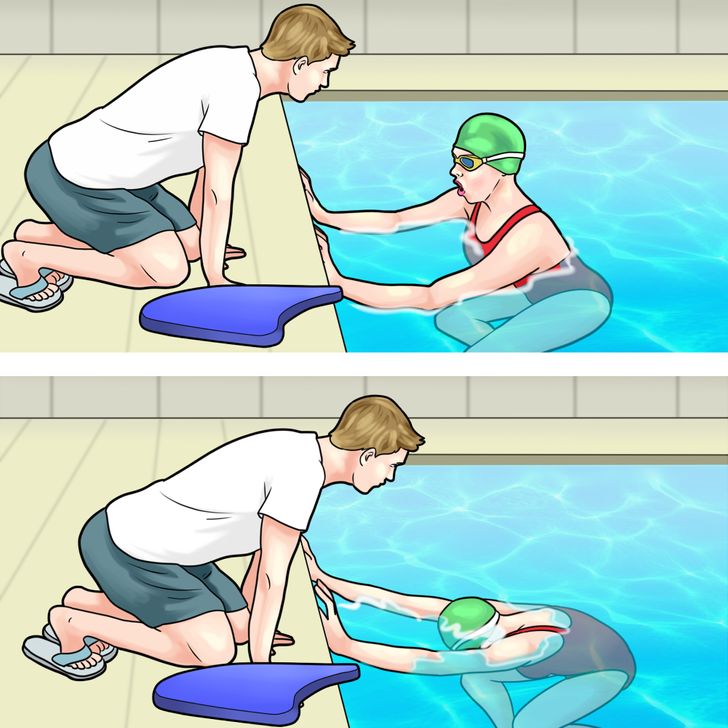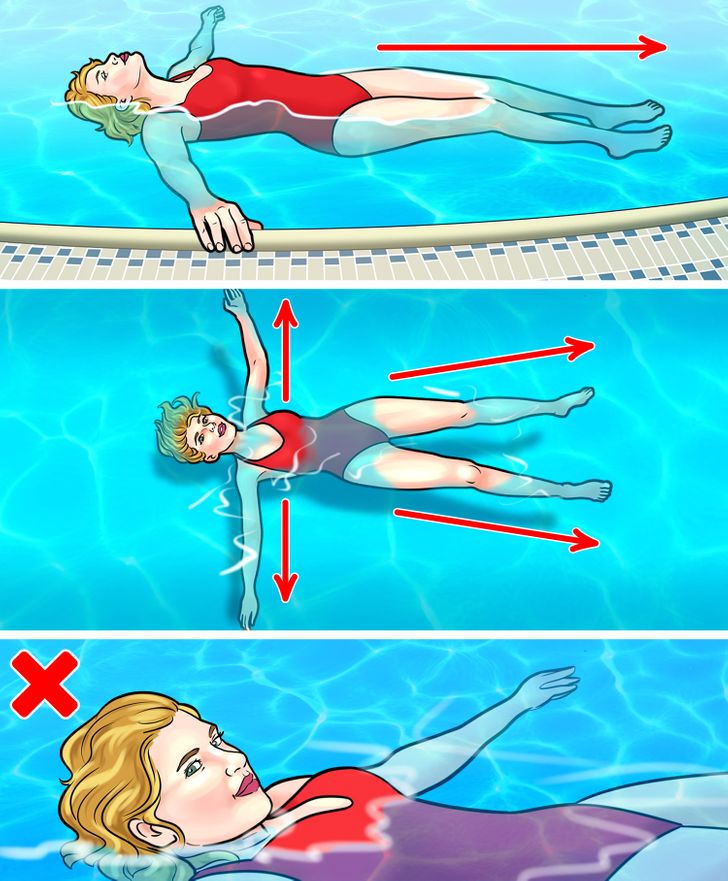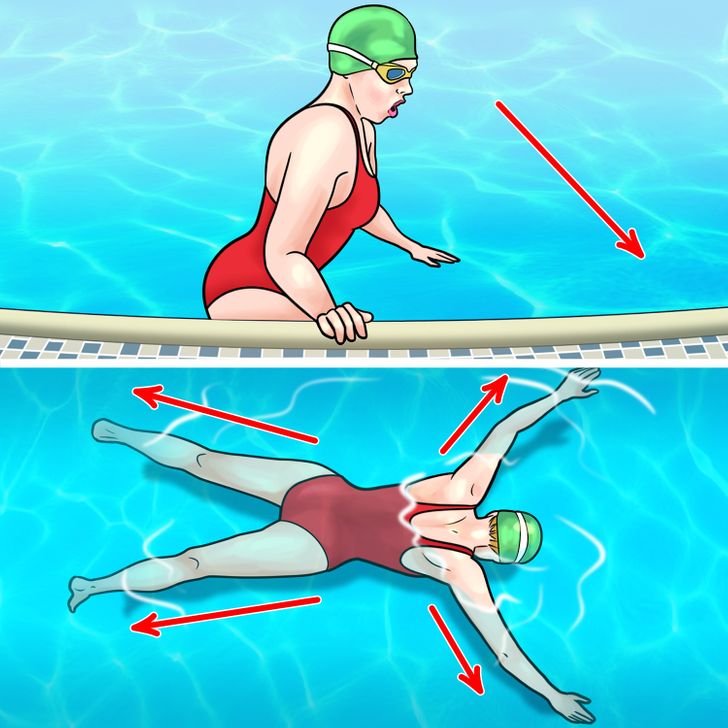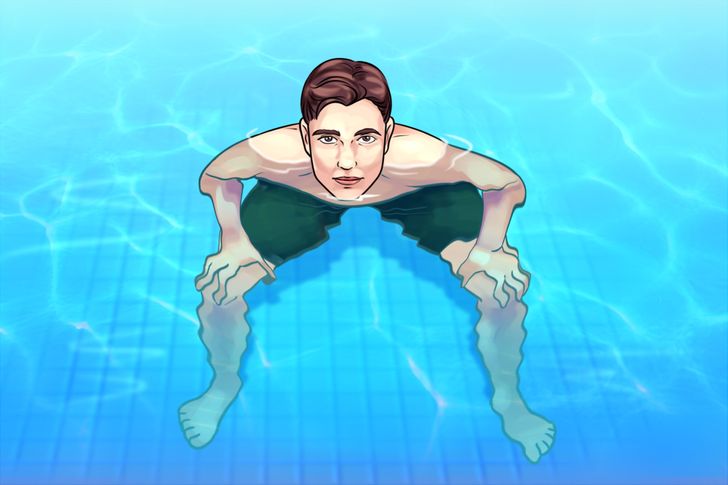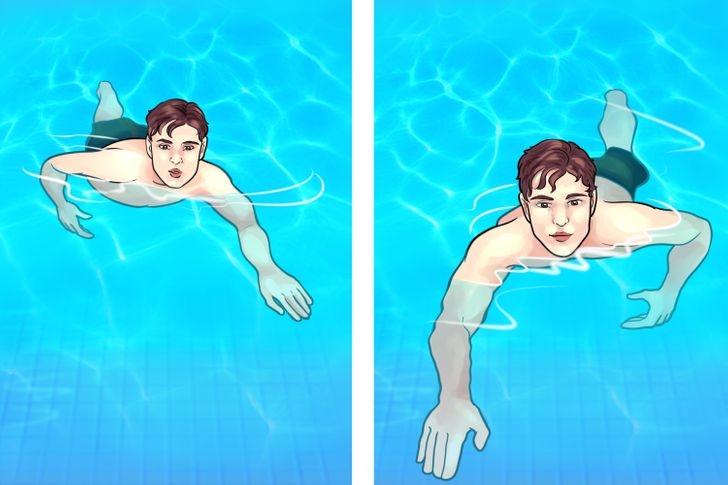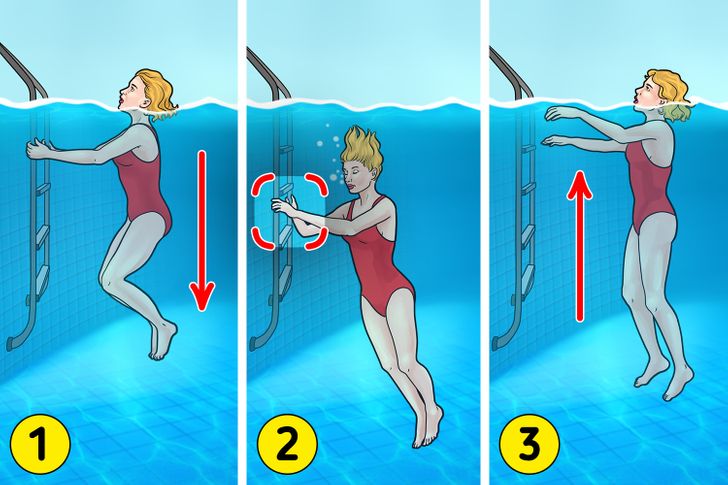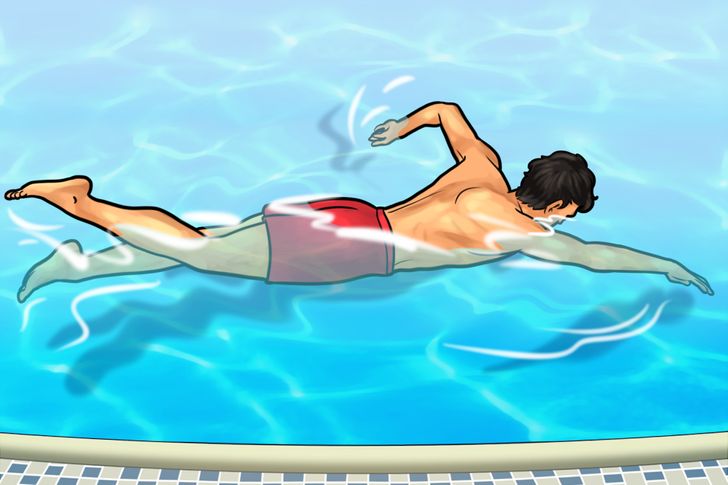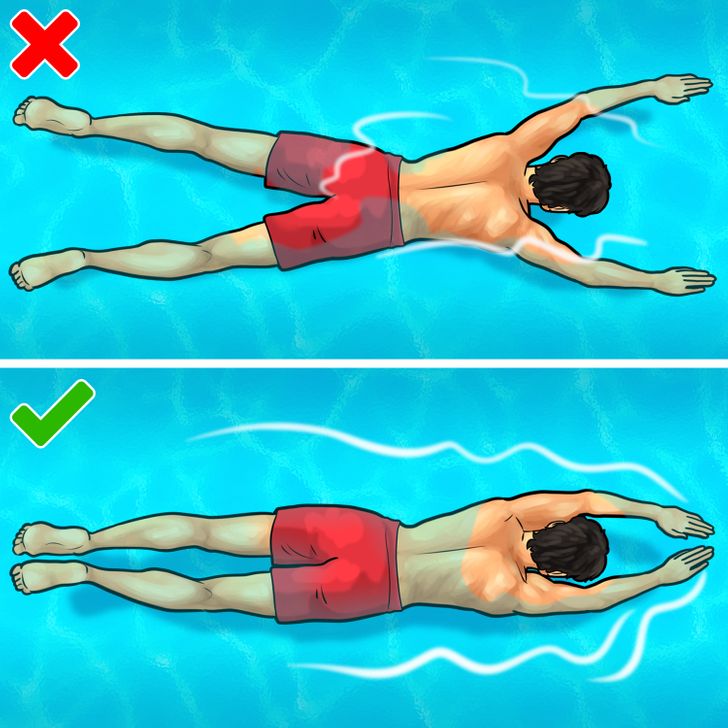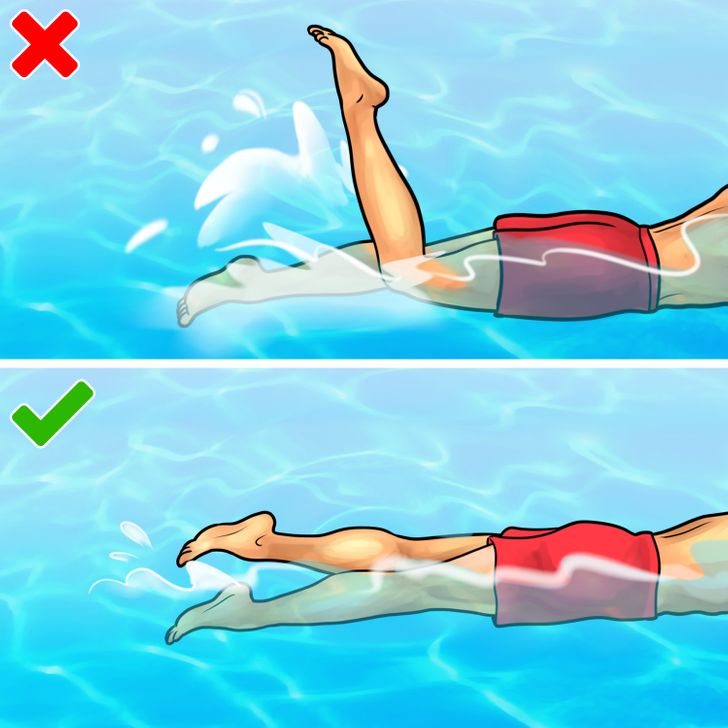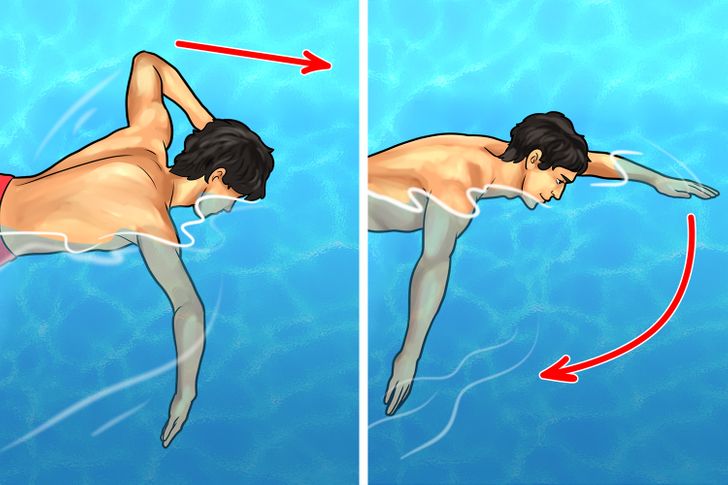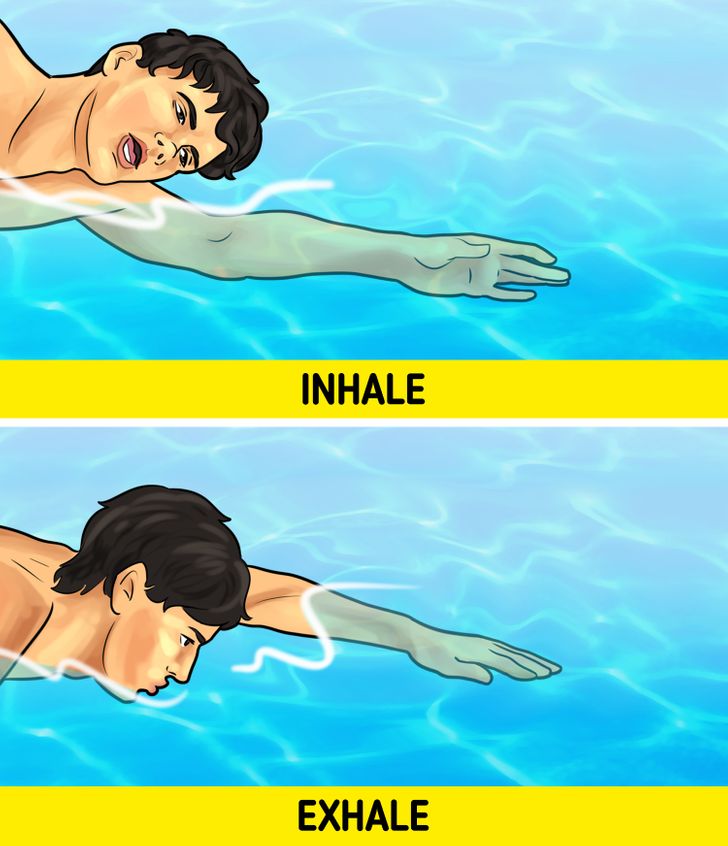How to Swim: Tips for Beginners
If you haven’t had the opportunity to spend enough time in the water to learn how to swim, don’t worry, there’s still time to do so and there’s always a good opportunity to perfect your technique. Swimming, besides being a great activity to practice during hot summer days, has multiple health benefits, like improving sleep quality and managing stress.
5-Minute Crafts has prepared a simple guide you can use to start feeling comfortable in the water and learn how to practice this sport. However, always remember to do these exercises under supervision.
1. Make sure you feel comfortable and safe in the water
Before really getting started, you should make sure you feel comfortable in the pool where you want to learn to swim. In the beginning, it’s completely normal to experience some insecurity and fear regarding being in the water, especially if you have not had the opportunity to spend time in a pool or in the sea before. However, there are a few simple steps that could help you alleviate feelings of distress or danger when swimming for the first time. Remember that you can always take it one step at a time depending on how you feel about it.
If you are ready to learn, keep the following tips in mind:
- Start by practicing in the shallow part of the pool, where you can rest your feet on the bottom and keep your balance. In this area, you can also do breathing exercises and get used to the pool. It is important that you spend as much time as possible in the water, as this will help you gain confidence.
- Use swim goggles. These will make you feel more comfortable, as they prevent the water and its components from entering your eyes. That, in turn, will allow you to see clearly when you submerge your head.
- At first, you’ll also have to get used to your face being in constant contact with the water. Try to submerge yourself by inhaling enough air or puffing out your cheeks. Stay underwater until you feel the need to come up to breathe again. To avoid panic, always perform this exercise near the edge of the pool or somewhere you can hold on to something.
- Keep a float or board within reach. This will not only increase your safety while practicing, but it will actually give you a sense of security as well. Try to avoid being alone or in places where there are no people who can help you in case something goes wrong.
2. Learn to float
- Now you’re ready for the next step. Still, at the most shallow part of the pool, hold on to the edge with your dominant hand and extend your legs forward, as much as possible. Pretend you were lying on your bed, but instead you’re using the surface of the water as support. Keep your body relaxed and avoid tensing your muscles. You will slowly feel yourself float effortlessly.
- Now extend your arms and legs so that your body turns into a star shape. Remember to always keep your head back, as if you were lying in bed. If you tilt your head forward, you will stop floating and sink into the water. Your head acts as a sort of balance tool when you’re in the water, so be mindful of that.
- Since the most common swimming position is to swim forward with your face looking down in the water, you might want to try floating on your body in a frontal position. This will allow you to get used to this particular position which might seem somewhat unnatural at first, but with time you’ll get used to it and you’ll use it naturally. Again, remember to keep your head slightly submerged in the water to stay afloat.
- Just like in the previous steps, make sure to hold on to the edge of the pool so that you feel safe, inhale enough air and extend your legs backward as if you were lying face down on the surface of the water.
3. Learn to dog paddle
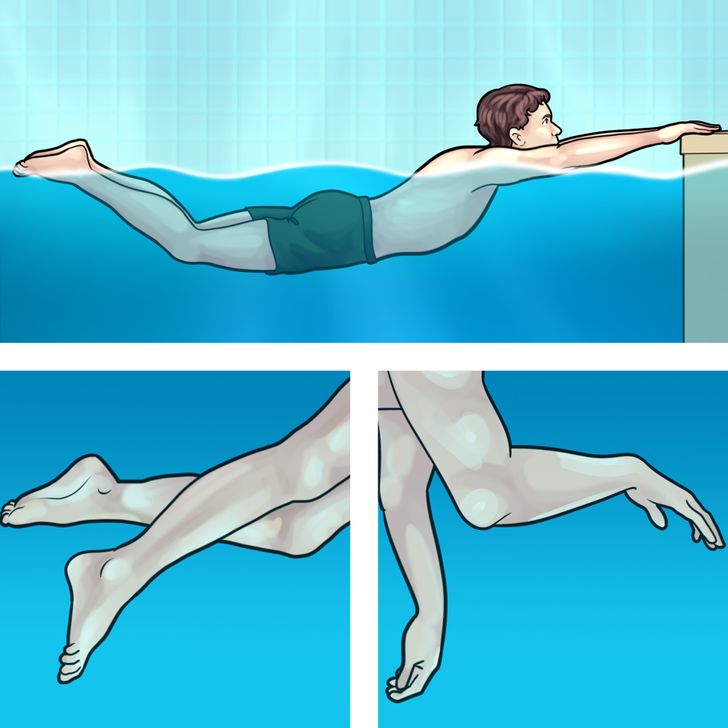
- This stroke is one of the most recommended when you’ve just started to learn how to swim. It’s simple, it’s intuitive, and most of all, it gives a real sense of security because of how simple it is. In fact, many animals use this type of stroke naturally.
- You can practice some movements by holding on to the edge of the pool with both arms and kicking if you feel the need to. This exercise will allow you to gain coordination and control the weight of your legs. In the end, the goal is to balance your head and your legs, and to float while still moving forward.
- Once you’ve gained some confidence, you can release the edge of the pool and try to breaststroke forward with your hands in and out of the water. Always stay close to the edge in case you get tired or just to feel safer. Remember to always practice these when there’s someone around that can help you in case of an emergency.
- Try to cross the pool. But before you do, practice bringing your chin close to the water and keeping your head on the surface. This will help you get used to this position and the weight of your head in the water.
- Move your arms and legs alternately left and right in a synchronized manner. Use your arms to sort of propel yourself upward. At the same time, you should kick back gently to propel yourself forward while keeping your legs extended.
- Remember that, just like with any other sport, learning to swim will require practice and perseverance. This is why we recommend that you train regularly so that you can learn advanced techniques later on.
4. Get used to the depth of your pool
Since the depth of the water can be a concern when you are just starting to swim, a good way to get used to it is to practice the following exercise:
- Hold on to a ladder in the deep end of the pool with both arms, inhale enough air and start going down the ladder one step at a time.
- When you feel more confident, descend as far as you can, always holding on to the ladder to make sure you can go back up if you need to.
- Bring your head to the surface and try to let go of the ladder, keeping your body relaxed at all times and your arms extended close to the ladder. Move your feet forward and backward. You will see how your body floats without touching the bottom of the pool.
5. Learn to swim front crawl style
- Front crawl, also known as freestyle, is another common technique that beginners start learning once they feel more comfortable in the water. While it allows you to swim faster than other techniques, it can also be very tiring if not done correctly, so it’s important to have a good technique if you want to succeed.
- As mentioned earlier, it’s often recommended that you practice this only once you are used to the water and the depth of the pool. That’s because to learn this particular style, you will have to swim the length of the pool. It is also important for you to be able to float already. Doing that will allow you to feel more confident during the whole practice and focus on your technique instead of on floating.
- Keep your body horizontally aligned to the surface of the water. Your face should be submerged in the water, as you’ll be facing downward and slightly forward. This is actually what will allow you to glide faster.
- When swimming kick steadily and alternate left and right leg movements. All of the movements with your legs should actually start all the way back in your hips. This will help you keep your body aligned and straight. Relax your knees and heels by pointing your feet slightly downward.
- Don’t kick too much, as excessive kicking will most likely cause you to become tired too quickly if you’re swimming over long distances, especially at first. Instead, focus on remembering to keep your feet in the right position.
- Submerge your hands, keeping your fingertips aligned with your head. As your hand enters the water, move your arm back. Hinge your elbows and lift them on each stroke.
- When you’re ready to inhale air again you have to tilt your head to the side during the stroke. The idea is then to exhale when your face dips back down into the water. Do not hold your breath for too long, as this will affect your oxygenation — you have to keep a constant breathing rhythm.
- Remember that each movement you make will complement the next, so they must be continuous and smooth, without losing your coordination.
5-Minute Crafts gets commissions for purchases made through links in this post.
